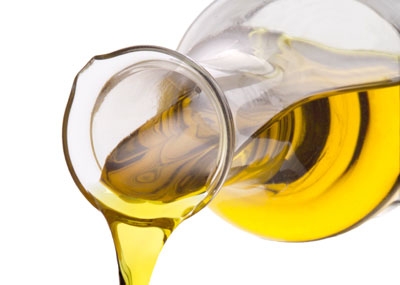Posts Tagged: walnut
UC, CSU team up on agricultural, environmental research projects

Leadership of California’s higher education systems made the funding available to jointly address issues in agriculture, natural resources and human sciences. Project criteria include collaborative research, teaching, or course development; development of student internship opportunities; and workshops, conferences, and symposia. Eight projects totaling more than $79,500 were selected from 30 proposals submitted.
“These research projects will help leverage limited resources to produce quick results on important issues in California,” said Neal Van Alfen, dean of the College of Agricultural and Environmental Sciences at UC Davis. “They are also building stronger connections among researchers throughout the state and providing hands-on learning opportunities for students.”
Researchers involved in this year’s projects are from UC Davis, UC Berkeley and California State University campuses at Chico, Fresno, Humboldt, Pomona, Sonoma, San Marcos and San Luis Obispo. The awarded projects, with principal investigators, are listed below:
- “Estimating residential water demand functions in urban California regions” — Economists from UC Berkeley and Cal Poly San Luis Obispo will estimate residential water demand of municipalities and water companies that serve 19 million people in the Bay Area and Southern California. (Maximilian Auffhammer, Stephen Hamilton)
- “Reintroduced mammals and plant invaders as key drivers of ecosystem processes in coastal and interior grasslands” — Researchers from Sonoma State University and UC Davis will study how reintroducing tule elk and reducing invasive Harding grass affects the availability of soil nutrients and the composition of plant communities. (Caroline Christian, J. Hall Cushman, Valerie Eviner)
- “Genetics of plant defense responses to pesticides and spider mites on grapes” — Scientists from UC Davis and Cal Poly San Luis Obispo will conduct laboratory, greenhouse and field studies to learn more about factors affecting grapevine response to spider mites, including cultivar resistance, drought impact and pesticide exposure. (Michael Costello, Richard Karban, Andrew Walker, Jeffrey Wong)
- “Defining the functions of polyphenol oxidase in walnut” — Through genetic analysis, researchers at CSU San Marcos and UC Davis seek to learn more about an enzyme involved in the postharvest browning of cut or bruised fruit. (Matthew Escobar, Monica Britton, Abhaya Dandekar)
- “Modeling the costs of hazardous fuel reduction thinning treatments and removal of woody biomass for energy” — Researchers from Humboldt State University, UC Davis, and the U.S. Forest Service will develop a model to estimate the costs of removing hazardous wildland fuels with different equipment and systems over a wide range of forest stand, site and road conditions. (Han-Sup Han, Bruce Hartsough)
- “Restoration of pollinator communities and pollination function in riparian habitats” — Researchers from California State University, Chico, and UC Davis will characterize native pollinator communities at restored riparian habitats within the Central Valley and test whether successful restoration of pollinator communities also leads to restoration of pollination. (Christopher Ivey, Neal Williams)
- “Estimating alfalfa’s impact on regional nitrogen budgets and nitrate leaching losses in the Central Valley of California” — Researchers from California State University, Fresno, and UC Davis will collect alfalfa and non-legume plants from irrigated fields and also identify San Joaquin Valley farm sites for a multi-year study of alfalfa’s impact on regional nitrogen budgets, groundwater nitrate leaching, and nitrogen requirements of rotation crops. (Bruce Roberts, Stuart Pettygrove, Daniel Putnam)
- “Community and ecosystem response to elevated nitrogen in managed grassland ecosystems” — Restoration ecologists from Cal Poly Pomona and UC Berkeley will investigate how elevated nitrogen levels affect competition among native and exotic plant species with regard to fuel characteristics at UC’s South Coast Research and Extension Center. (Erin Questad, Katharine Suding)
Reports on project outcomes are expected in December 2012.
California olive oil trade rivals Europe

In fact, the article noted, a recent study by the Olive Center at UC Davis found that 69 percent of imported extra-virgin olive oils bought off the shelves of California supermarkets failed to meet international standards. European producers, however, said that testing supermarket products proves nothing about the relative quality of imported and domestic oils.
“You can’t decide that all imported oils are suspect and dismiss thousands of years of craftsmanship,” scoffed an American expert who farms olives in Tuscany. Critics also question the cultivation and production methods used in California.
UC Cooperative Extension olive oil expert Paul Vossen, who has worked with virtually every olive grower in the state, called that idea “a bunch of baloney.” He said high-density planting currently works only with certain varieties — arbequina and arbosana from Spain, and koroneiki from Greece — but for those, the practice is no different from other kinds of farming.
Early rain complicates walnut harvest
Tim Hearden, Capital Press
Nearly a week's worth of early-season rain in Northern California brought the normally robust harvest of middle and late walnut varieties to a stop. More than half the state's estimated 485,000-ton walnut crop consists of later varieties, many of which got caught in the rain
With growers fearing they might be hit with unfavorable weather during their harvest, some applied etheryl to induce hull split early, said UC Cooperative Extension farm advisor Rick Buchner. Whether or not that was beneficial is "a matter of some debate."
"Some guys were happy to get the husk open because the nut is going to dry faster," he said. "Even if it's laying on the ground, it's drying. That could be an advantage."